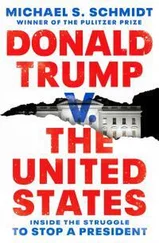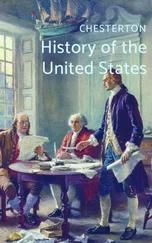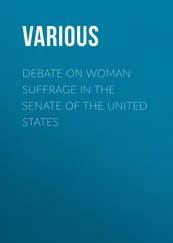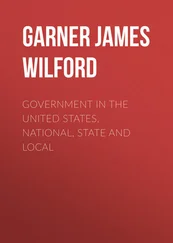Jeffrey Lewis - The 2020 Commission Report on the North Korean Nuclear Attacks Against the United States
Здесь есть возможность читать онлайн «Jeffrey Lewis - The 2020 Commission Report on the North Korean Nuclear Attacks Against the United States» весь текст электронной книги совершенно бесплатно (целиком полную версию без сокращений). В некоторых случаях можно слушать аудио, скачать через торрент в формате fb2 и присутствует краткое содержание. Город: New York, Год выпуска: 2018, ISBN: 2018, Издательство: Mariner Books, Жанр: Фантастика и фэнтези, Триллер, на английском языке. Описание произведения, (предисловие) а так же отзывы посетителей доступны на портале библиотеки ЛибКат.
- Название:The 2020 Commission Report on the North Korean Nuclear Attacks Against the United States
- Автор:
- Издательство:Mariner Books
- Жанр:
- Год:2018
- Город:New York
- ISBN:9-781-328-57391-9
- Рейтинг книги:4 / 5. Голосов: 1
-
Избранное:Добавить в избранное
- Отзывы:
-
Ваша оценка:
- 80
- 1
- 2
- 3
- 4
- 5
The 2020 Commission Report on the North Korean Nuclear Attacks Against the United States: краткое содержание, описание и аннотация
Предлагаем к чтению аннотацию, описание, краткое содержание или предисловие (зависит от того, что написал сам автор книги «The 2020 Commission Report on the North Korean Nuclear Attacks Against the United States»). Если вы не нашли необходимую информацию о книге — напишите в комментариях, мы постараемся отыскать её.
The 2020 Commission Report on the North Korean Nuclear Attacks Against the United States — читать онлайн бесплатно полную книгу (весь текст) целиком
Ниже представлен текст книги, разбитый по страницам. Система сохранения места последней прочитанной страницы, позволяет с удобством читать онлайн бесплатно книгу «The 2020 Commission Report on the North Korean Nuclear Attacks Against the United States», без необходимости каждый раз заново искать на чём Вы остановились. Поставьте закладку, и сможете в любой момент перейти на страницу, на которой закончили чтение.
Интервал:
Закладка:
The central problem, as has become clear in the course of this commission’s investigations, arose from the peculiarities relating to both process and place. It is impossible to grasp the reasons for the breakdown of the Trump administration’s executive functions without understanding both the process that was in place to provide the president with information and the unusual features of its implementation that arose from the fact that, as the crisis unfolded, the president was not in Washington, but in Palm Beach.
Mar-a-Lago proved a challenging location for President Trump to manage an international crisis. There is some irony in this, given that Mar-a-Lago’s original resident intended it for essentially this role. Although the property was built as a private residence in 1929, its owner, Marjorie Merriweather Post, had arranged for Mar-a-Lago to be transferred to the federal government for use as a “Winter White House” after her death. Although the US government held the title to the property from 1973 to 1981, the high cost of maintenance resulted in the government returning the property to her heirs. Donald Trump purchased it in 1985. With Trump’s election as president in 2016, Mrs. Post’s vision had in one sense come to pass.
But Mar-a-Lago was a very unusual presidential residence. Donald Trump, in the mid-1990s, reinvented Mar-a-Lago as a private club with fifty-eight guest rooms. At the same time, he maintained a private residence in the former “owner’s house” at the south end of the main building. As a result, Mar-a-Lago served as both a private members’ club and a private residence for the president, two functions that were often in obvious tension.
That tension was an early headache for the Secret Service. The agency had to provide for the security of the president, but it also had to accommodate the club’s fundamental business as a luxury resort for wealthy members, many of whom complained about the introduction of basic security screening measures. The club management fielded numerous complaints over the first year of the Trump administration about the imposition of such measures from members, some of whom began referring to presidential visits as “Hurricane Donald.”
The result was an uneasy compromise between protecting the president and protecting the club’s business model. Many workable solutions were found. For instance, the Secret Service determined that a service entrance off Southern Boulevard could provide the president with access to his residence, allowing him to slip in and out of the club with a bit more discretion, although it did not ease the security requirements on club members.
Yet such solutions created problems of their own. President Trump’s use of the Southern Boulevard service entrance required that he traverse a walkway that connected the main building to another in which weddings were held. (Sometimes surprised wedding-goers even had an unscheduled appearance by the president.) The use of the Southern Boulevard entrance also created significant traffic delays, particularly on the Southern Boulevard Bridge, which is one of the roadways connecting the barrier island of Palm Beach to the Florida mainland.
In addition to security measures, the president needed facilities to handle classified information. Fortunately, Mrs. Post, a vigorous advocate of civil defense, had built numerous fallout shelters at all her residences, including three shelters at Mar-a-Lago underneath the main building. Over the years, these shelters had been repurposed to serve as storage and, for a time, as an office for Trump’s butler. After Trump’s election, one of the fallout shelters was converted to a secure compartmentalized information facility (SCIF) for handling classified information. This facility—which staff sometimes called the “cone of silence” in jest—could only be accessed from the main building. While the basement facility was better than the terrace for holding classified briefings, club members could tell that a classified briefing was about to commence by the procession of staff in off-the-rack suits making their way down into the basement.
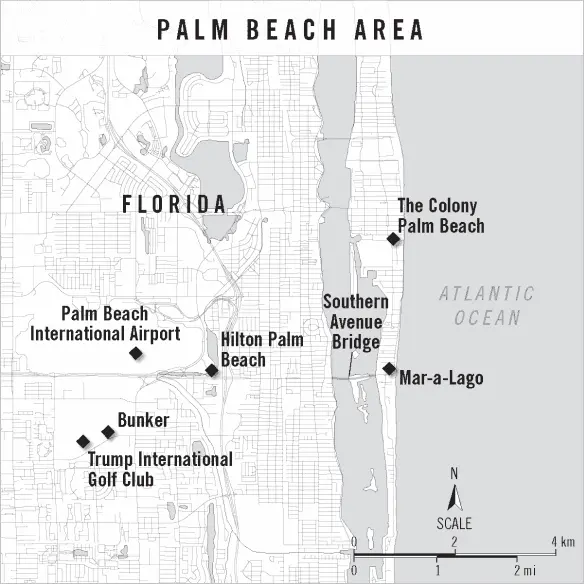
There were other ways in which Mar-a-Lago was simply not suitable as a presidential residence, particularly in regard to the large staff that had to travel with the president. For example, Mar-a-Lago offered a limited number of rooms, and its high rack rate substantially exceeded the General Services Administration (GSA) per diem of $195. As a result, the president’s senior staff, including his chief of staff, rarely stayed at Mar-a-Lago itself. Instead, senior staff booked rooms at the nearest hotel, Colony Palm Beach. The Colony is about ten minutes north of Mar-a-Lago by car. It does not have facilities to handle classified information.
Other staff stayed at the Hilton Palm Beach Airport, which is located in West Palm Beach on the mainland, a fifteen-minute drive west over the Southern Boulevard Bridge. This hotel, which is less expensive than either Mar-a-Lago or the Colony, offered staff easy access to the airport and to the Trump International Golf Club in West Palm Beach—roughly five miles across Lake Worth Lagoon from Mar-a-Lago—but also kept them separated from Trump by a minimum of a quarter-hour’s travel.
The layout of President Trump’s properties in Palm Beach scattered his staff around Palm Beach. In a time of crisis, Trump and his senior staff were spread across three different locations, with the president himself on an island—both literally and figuratively.
Jack Francis was President Trump’s fourth chief of staff. It was not an easy job. Reince Priebus had lasted only six months, John Kelly a little over a year, and then Dan Scavino for another year after Kelly’s departure. Francis had more in common with Kelly than Priebus or Scavino. Like Kelly, Francis was a retired Marine four-star general. And like Kelly, he made it his mission to manage a chaotic White House. As Francis saw it, any chief of staff would behave in exactly the same way. Indeed, one of Francis’s first priorities after taking over as chief of staff from Scavino was putting an end to the power struggles that had plagued the Trump administration and imposing some control over who the president saw and how he received information.
In this task, Francis worked closely with Keith Kellogg, a retired Army three-star general who became Trump’s fourth national security adviser following Michael Flynn, H. R. McMaster, and John Bolton. Kellogg, who had previously served in the same role for the vice president, had no idea how long he would be around, but he was determined to help Francis keep things together for as long as he could. That was a tall order, as the myriad scandals and investigations swirling around the president and key members of his staff created a constant sense of crisis within the White House.
Mostly Francis and Kellogg focused on keeping the president’s legal woes from overwhelming everything else. They also worked to keep various international crises, like the threat posed by North Korea’s growing nuclear and missile programs, from spiraling out of control. But Francis and Kellogg also knew they needed to tread carefully. After all, it had been North Korea that did in their predecessors. In fact, it had been the issue of negotiations with North Korea that had led Trump to show their predecessors the door.
During the brief thaw in relations in 2018, Donald Trump had relied heavily on Mike Pompeo to do the legwork in advance of his summit with Kim Jong Un. Pompeo’s role began while he was still the director of the CIA and continued after he replaced Rex Tillerson as the secretary of state. Pompeo had a reputation at CIA for giving Trump a steady stream of rosy intelligence assessments about the impact of sanctions on North Korea. “Pompeo kept feeding Trump assessments that US military threats will force Kim to bow to US demands for nuclear disarmament,” one former White House official said. Some officials felt that Pompeo’s characterizations went far beyond what the CIA analysts actually believed and were in fact an effort to flatter Trump. It was Pompeo who traveled to Pyongyang to meet with Kim Jong Un. And it was Pompeo who took the blame when it became clear that Kim Jong Un had no intention of abandoning his nuclear weapons.
Читать дальшеИнтервал:
Закладка:
Похожие книги на «The 2020 Commission Report on the North Korean Nuclear Attacks Against the United States»
Представляем Вашему вниманию похожие книги на «The 2020 Commission Report on the North Korean Nuclear Attacks Against the United States» списком для выбора. Мы отобрали схожую по названию и смыслу литературу в надежде предоставить читателям больше вариантов отыскать новые, интересные, ещё непрочитанные произведения.
Обсуждение, отзывы о книге «The 2020 Commission Report on the North Korean Nuclear Attacks Against the United States» и просто собственные мнения читателей. Оставьте ваши комментарии, напишите, что Вы думаете о произведении, его смысле или главных героях. Укажите что конкретно понравилось, а что нет, и почему Вы так считаете.



